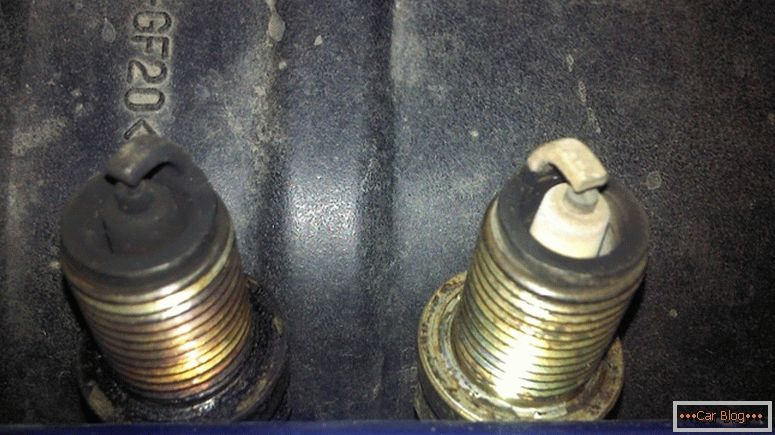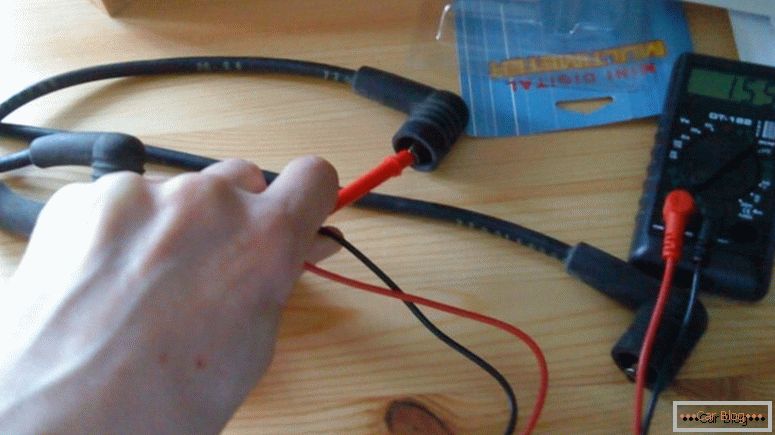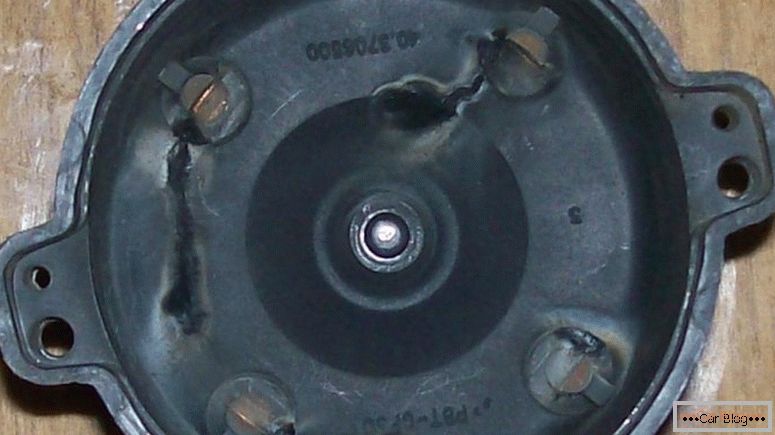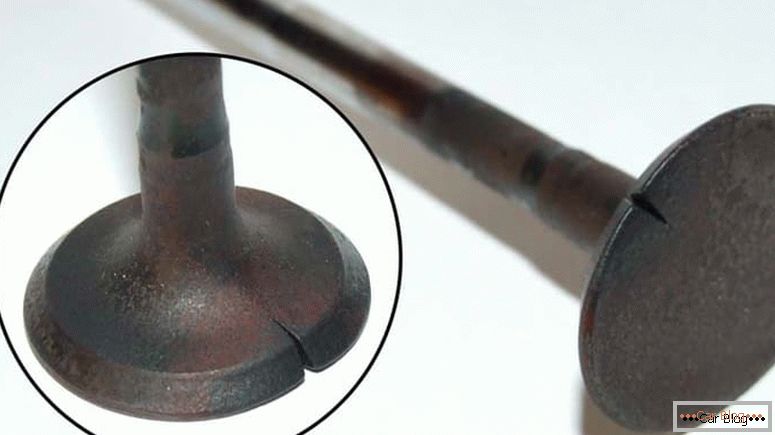The failure of one of the cylinders is not the most common problem of the engine, however, this sometimes happens. The motor construction is also called “missing”, but in essence these are identical concepts. We will try to make out the most likely causes of such a problem, as well as find ways to eliminate them.
Content
- 1 Why precisely “troit”
- 2 Causes and consequences of engine tripping
- 3 Determine the non-working cylinder
- 4 Maybe the problem in the candlelight
- 5 Inspect the armored wire
- 6 Distributor
- 7 Injector or injector problems
- 8 Other causes of triple
Why precisely “troit”

Engine construction is interruption in the operation of one (or several) engine cylinders.
Выражение «троит двигатель» уходит корнями во времена, когда 4-цилиндровые двигатели «правили бал» в автомобильном мире и подавляющее большинство автомобилей оснащались именно такими агрегатами. Немудрено что при отказе одного из цилиндров в работе оставались только три. При этом проявлялся характерный звук, который и стали называть троением двигателя. Сейчас двигатели могут иметь и по 16 цилиндров, но проблему по-прежнему именуют не иначе как троением. Теперь разобравшись в том, what does the engine mean, можно приступить к изучению причин этой неисправности.
Causes and consequences of engine tripping
So, from under a cowl the characteristic unpleasant sound was heard and vibration began to be clearly felt. Engine zatroil. In addition to the discomfort for the driver, this process is fraught with big problems for the engine itself, which starts to wear out much faster than usual. Why? Everything is simple - the air-fuel mixture still enters the non-working cylinder, but the combustion process does not occur. As a result, gasoline is deposited in the cylinder, gets into the oil and into the engine crankcase. This, in turn, adversely affects the oil - it becomes more and more liquid and over time can not fully perform its functions.
As a result - a decrease in motor compression, as well as scoring on the metal, arising from the fact that the friction parts do not receive the necessary lubrication. In other words - the engine runs almost "dry". The temperature of the engine is also changing - it becomes more susceptible to overheating. All because the oil, besides the main function, also performs partial heat removal from moving parts, but mixed with gasoline can no longer cope with this task.
It may seem that the diagnosis of this kind of malfunction is absolutely “trivial” case. For those who think the news so disappointing - sometimes if the engine is troit, the reasons are not so easy to identify. Therefore, the search process should be disassembled in more detail. Consider ways to identify faults that can be carried out in your own garage, without having to disassemble the engine and without using complex professional devices.
Determine the non-working cylinder

Determine the non-working cylinder
To facilitate the work of finding the causes of motor building, you must first identify which of the cylinders is not working. For this purpose, a proven method has been used for a long time, for which one does not need to have complicated equipment and special skills. Perhaps you have already guessed that we are talking about the sequential removal of the armored cables from the engine spark plugs. Naturally, the first thing to remember is safety, as there is a risk of electric shock. So, consider the method in more detail:
- Before starting such a diagnosis, we are looking for a dielectric base (a piece of thick rubber or a wooden plank), on which we will become legs.
- The engine speed is brought to about 1500.
- We remove the high-voltage wires, holding the wire itself, and not the cap. In no case do not touch the car body.
- Remove each wire in series. If the sound changes - with the cylinder everything is in order, there are no changes - you have found a non-working cylinder.
Having defined the inoperative cylinder, consider the reasons why the engine troit on the cold.
Maybe the problem is in the candles
First, using the candle key, extract the candle and conduct its visual inspection. The working candle must have a brownish coating on the electrode and an insulator without damage. Discovered black soot can cause engine build-up - most likely, the mixture is over-enriched with gasoline or pumped with oil into the cylinder. Nagar interferes with the normal formation of a spark, so the candle works either intermittently or does not work at all. Nagar may occur for the following reasons:
- the engine is systematically subjected to prolonged heating or for a long time it is forced to work at idle speed;
- reduced compression ratio in the cylinder;
- lost marks of the timing belt;
- failure of the injector or carburetor;
- oxygen sensor malfunction.

Nagar on the candles can negatively affect the operation of the cylinder and, as a result, cause tripping
Now examine the body of the candle. A working item will not have plaque, chips, cracks and other defects. If you find something like this, you should know - the candle cannot be saved anymore, only a replacement remains.
Visual inspection did not reveal any of the listed problems? Then go ahead and check if there is a spark. To do this, insert the candle into the socket of the armored wire and fix it so that it touches the engine weight. We ask someone to scroll the starter and carefully look at the electrode - if there is a spark, we continue to search elsewhere. In case the spark did not slip, perhaps we found the reason why the engine is troit.
Inspect the armored wire
If we are convinced that the candle has nothing to do with it, go to the high-voltage wires. We'll have to carefully review each of them separately. We start with the inspection of the landing nest for the spark plug. Inside there should not be a raid, and color should be uniform. If you find a change in color or the presence of gray-brown patches, it means that the armor wire has been subjected to extreme loads for a long time, and perhaps it simply breaks through and the spark does not reach the candle.

Checking the resistance of high-voltage wires with a multimeter
In such a situation it would be nice to use a multimeter to measure the resistance of a high-voltage wire. Despite the different design features of different motors, the readings of the multimeter should not exceed 10 kΩ. If after checking the readings on one of the wires are significantly different from the rest, it is possible that he is the culprit of the motor building.
See also: Classification of motor oilsThere are cases when simple human inattention comes into play - the armored cable can simply be confused after the previous removal. This is probably the easiest problem to solve. It is enough just to look at the cover of the distributor for the number of cylinders for which each of the wires is responsible and return everything to its place, observing the correct sequence.
Distributor
If after checking and wires were not to blame, go to the inspection of the distributor ignition distributor (in the people - distributor). The most common malfunction - cover breakdown. It can be diagnosed both by external signs (dark stripes in the contact area) and by conducting a small test. To do this, fasten the wire securely to the engine mass and draw it very close to the cover of the distributor (at a distance of 0.5-1 mm). If there is a breakdown, a spark will jump directly at the breakdown point. Such a test is carried out on its own engine.
In addition, the distributor shaft itself and its bushings may wear out. And due to the failure of the bearings of the swivel plate between the contacts may be a gap.

The cause of tripping may be a faulty distributor cap.
Injector or injector problems
The design may be caused by faults in the injector or problems with the injectors. Here are some causes of problems:
- Rarely, it happens that the injector itself fails.
- Poor fuel quality or inept cleaning of the fuel system with various chemicals.
- Problems with the injector power supply circuits.
- Incorrectly installed valve timing.
Other causes of triple
In addition to the above reasons, although less often, the motor construction may be caused by other factors:

The cause of engine tripping may be faulty valves.
- Incorrect installation of the moment of ignition. In this case, the engine often trips at idle, and as soon as the engine speed rises, the engine is running. This may indicate early ignition. Fortunately, car owners problem is solved quite simply and inexpensively.
- Burn valves or pistons. The difficulty of diagnosing this kind of malfunction is that for this, most likely, you will have to disassemble the engine and cylinder head. Without this experience, it is better to turn to professional mechanics, otherwise you can even more damage the unit.
- Malfunction of rings or their deformation. The phenomenon is infrequent, but it can also cause engine separation. Determine the condition of the ring by checking the compression in the engine. To eliminate a malfunction on the side of the cylinder head, add oil to the cylinder and re-take measurements. If the compression has increased - the fault is in the piston.
- Unadjusted valves. In order for the motor to work properly, the intake and exhaust valves must open and close strictly at a certain point. In addition, the valves may not fully open and close. Violation of their work leads to an incorrect ratio of fuel and air in the incoming mixture, which can also lead to precipitation.
- Clogged air filter. It may also affect the composition of the mixture. The fact is that a clogged filter prevents sufficiently enrich the mixture with air. The problem is fixed by replacing the filter.



